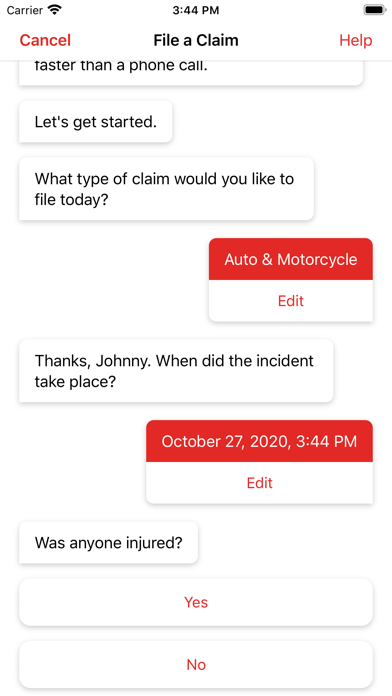Preventive care is covered If you seek care when you're sick or hurt, you'll normally need to pay something expense until you reach your annual deductible. Some services might be covered at no charge to you, including yearly checkups, age-appropriate screenings, other kinds of preventive care, and preventive medications as mandated by the Affordable Care Act.
Know the expense of care Medical insurance is less confusing when you understand the different expenses that are part of your health plan. Informing yourself about how health insurance coverage works is a vital part of being a clever health care consumer.
Sales Questions and Additional best timeshare to own Plan Information: Calls might or may not be addressed inside the United States. Monday Friday: 8 a. m. 8 p. m. CTSaturday: 8 a. m. 6 p. m. CTSunday: 10 a. m. 2 p. m. CT Consumer Service: Calls may or may not be responded to inside the United States.
m. 8 p. m. CTSaturday: 8 a. m. 5 p. m. CTSunday: Closed Already a member?Call the Customer support number on the back of your member ID card. New to Medicare or Need Assist Looking For a Plan? Call us at $11-877-213-1821 TTY 711 We're open between 8 a. m.
m., local time, 7 days a week. If you're calling from April 1 through September 30, alternate technologies (for example, voicemail) will be utilized on the weekends and holidays.
An Unbiased View of How Much Is Urgent Care Without Insurance
Lots of health insurance require both a deductible and coinsurance. Comprehending the difference in between deductible and coinsurance is an important part of understanding what you'll owe when you utilize your health insurance. Deductible and coinsurance are kinds of medical insurance cost-sharing; you pay part of the expense of your healthcare, and your health insurance pays part of the expense of your care.
Ariel Skelley/ Getty Images A deductible is a set amount you pay each year prior to your medical insurance kicks in fully (when it comes to Medicare Part Afor inpatient carethe deductible uses to "benefit durations" rather than the year). Once you've paid your deductible, your health insurance begins to get its share of your healthcare expenses.

You have a $2,000 deductible. You get the flu in January and see your doctor. The medical professional's bill is $200, after it's been adjusted by your insurance provider to match the worked out rate they have with your physician. You are accountable for the entire expense considering that you haven't paid your deductible yet this year (for this example, we're assuming that your plan does not have a copay for workplace gos to, Click to find out more however rather, counts the charges towards your deductible).
[Keep in mind that your physician most likely billed more than $200. However because that's the negotiated rate your insurance company has with your medical professional, you only need to pay $200 and that's all that will http://holdenmdje536.jigsy.com/entries/general/the-2-minute-rule-for-what-is-unemployment-insurance be counted towards your deductible; the rest simply gets composed off by the physician's workplace as part of their contract with your insurance company.] In March, you fall and break your arm.
You pay $1,800 of that expense before you've fulfilled your yearly deductible of $2,000 (the $200 from the treatment for the influenza, plus $1,800 of the expense of the broken arm). Now, your medical insurance starts and helps you pay the rest of the bill. You'll still need to pay some of the rest of the costs, thanks to coinsurance, which is talked about in more detail below.
The Single Strategy To Use For How Do I Get Health Insurance
The expense is $500. Given that you've currently satisfied your deductible for the year, you do not need to pay any more towards your deductible. Your medical insurance pays its complete share of this costs, based on whatever coinsurance split your plan has (for instance, an 80/20 coinsurance split would mean you 'd pay 20% of the costs and your insurance provider would pay 80%, assuming you haven't yet met your strategy's out-of-pocket maximum).
This will continue until you have actually satisfied your optimum out-of-pocket for the year. Coinsurance is another type of cost-sharing where you pay for part of the cost of your care, and your health insurance coverage spends for part of the cost of your care. However with coinsurance, you pay a portion of the costs, instead of a set amount.
Let's state you're required to pay 30% coinsurance for prescription medications. You fill a prescription for a drug that costs $100 (after your insurer's negotiated with the pharmacy is used). You pay $30 of that expense; your medical insurance pays $70. Because coinsurance is a portion of the cost of your care, if your care is really expensive, you pay a lot.
However the Affordable Care Act reformed our insurance coverage system since 2014, enforcing new out-of-pocket caps on nearly all strategies. Coinsurance costs of that magnitude are no longer enabled unless you have a grandfathered or grandmothered health insurance. All other strategies have to cap everyone's total out-of-pocket costs (including deductibles, copays, and coinsurance) for in-network vital health benefits at no greater than whatever the individual out-of-pocket maximum is for that year.
For 2021, it will be $8,550. However this includes all cost-sharing for essential health benefits from in-network companies, including your deductible and copaysso $10,000 in coinsurance for a $40,000 healthcare facility costs is no longer permitted on any plans that aren't grandfathered or grandmothered. Over time, however, the allowable out-of-pocket limitations might reach that level once again if the rules aren't modified by legislators (for viewpoint, the out-of-pocket limitation in 2014 was $6,350, so it's increased by nearly 35% from 2014 to 2021).
The Only Guide for How Much Will My Insurance Go Up After An Accident
When you've satisfied your deductible for the year, you don't owe anymore deductible payments till next year (or, when it comes to Medicare Part A, till your next advantage period) - how much is flood insurance in florida. You might still have to pay other kinds of cost-sharing like copayments or coinsurance, but your deductible is provided for the year.

The only time coinsurance stops is when you reach your health insurance policy's out-of-pocket optimum. This is unusual and only happens when you have really high health care expenses. Your deductible is a fixed amount, however your coinsurance is a variable quantity. If you have a $1,000 deductible, it's still $1,000 no matter how big the expense is.
Although you'll understand what your coinsurance percentage rate is when you enlist in a health insurance, you won't understand how much cash you really owe for any particular service up until you get that service and the bill. Considering that your coinsurance is a variable amounta portion of the billthe higher the bill is, the more you pay in coinsurance.
For instance, if you have a $20,000 surgical treatment expense, your 30% coinsurance will be a massive $6,000. But again, as long as your strategy isn't grandmothered or grandfathered, your total out-of-pocket charges can't surpass $8,150 in 2020, as long as you stay in-network and follow your insurance company's guidelines for things like recommendations and previous permission.
Deductible and coinsurance reduction the quantity your health insurance pays toward your care by making you get part of the tab. This advantages your health strategy due to the fact that they pay less, but likewise since you're less most likely to get unneeded healthcare services if you need to pay some of your own money towards the expense.